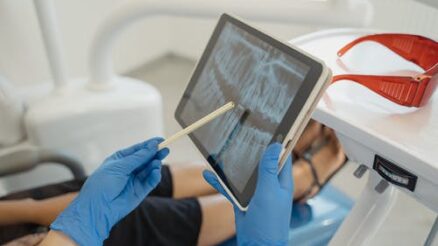Whether it’s an obsession with alcohol, drugs, or other damaging behaviors, addiction can shatter lives. An addiction treatment program can be a lifeline, but how do you know when it’s time to seek help? This comprehensive guide will help you understand more about addiction recovery and discern when to consider getting professional help.
Recognizing the Need for Help
For many, admitting the need for help is the first, often challenging step. Accepting the reality of addiction may come after noticing the persistently negative impact it has on one’s life. For instance, you might notice detrimental health effects, friction in relationships, or declining productivity at work. Struggling with withdrawal symptoms when you attempt to cut back on substance use could be another indicator.
Understanding Rehab Programs
Deciding to get help is an important first step, but what comes next? Initially, understanding the various types of rehabilitation programs available is crucial. You might start with outpatient facilities, which provide numerous services, as well as scheduled group or individual therapy sessions. For those with severe addiction issues, inpatient programs – that offer round-the-clock care and support – might be more beneficial.
Drug Rehabilitation
Specific options like addiction treatment in California are known for comprehensive drug rehabilitation programs that focus on both medical treatment and psychological therapy. It’s important to consider the nature and intensity of therapy and whether it matches the severity and type of the addicted condition.
Types of Addiction and their Effects
1. Alcohol addiction: Chronic alcohol consumption can lead to physical and psychological dependence. Excessive drinking can damage the liver and cause cardiovascular disease and neurologic complications. It also impacts brain function, resulting in impaired judgment, coordination, and decision-making abilities.
2. Tobacco/Nicotine addiction: This is one of the most common addictions worldwide. Long-term tobacco or nicotine use can lead to lung disease, heart disease, stroke, and cancer, among other health issues. Nicotine affects the brain’s reward system, causing dependence and withdrawal symptoms when stopped.
3. Opioid addiction: This includes addiction to prescription painkillers such as morphine and oxycodone, as well as illegal narcotics like heroin. Opioid addiction can cause respiratory failure, mental confusion, nausea, and constipation. It also leads to tolerance, withdrawal symptoms, overdose risks, and potential death.
4. Prescription Drug Addiction: Besides opioids, other prescription drugs such as stimulants, sedatives, and antidepressants, can also lead to addiction. Prolonged use can impact body functions, leading to physical complications and mental disorders.
5. Cocaine Addiction: Cocaine use can lead to severe cardiovascular issues, including heart attacks and stroke. It impacts the brain and can cause extreme paranoia, aggression, hallucinations, and increased risk-taking behavior.
6. Methamphetamine Addiction: Methamphetamine use can have devastating effects, including severe dental problems, skin infections, heart disease, and problems with memory and emotional control. It also significantly impacts the brain’s dopamine system, resulting in psychological dependence.
7. Marijuana Addiction: Marijuana dependence can lead to problems with memory, learning, coordination, and judgment. Long-term use can impact brain development and can increase the risk of mental health disorders like depression and anxiety.
8. Behavioral Addictions: Besides substance addiction, people can also develop addictions to certain behaviors such as gambling, eating, sex, internet use, and video gaming. These addictions can lead to psychological issues, financial problems, impaired social relationships, and health problems related to neglect of personal well-being.
9. Hallucinogen Addiction: This includes drugs like LSD, magic mushrooms, and peyote. Long-term use can result in persistent psychosis, flashbacks, and increased risk of mental health disorders.
10. Inhalant Addiction: This includes substances such as glue, paint thinners, and nitrous oxide. Chronic use can damage the brain, liver, and kidneys, while acute use can result in sudden heart failure and death.
The Critical Role of Detoxification
One vital part of many rehabilitation programs is detoxification. Detox is the process of purging the body of toxic substances for a clean slate.
Detox Program
Locations like drug detox treatment at Altitude Recovery tend to provide a medically supervised detox process. Detoxification can be uncomfortable, even potentially dangerous if not properly managed, hence why it’s typically stored in a controlled environment.
Rehabilitation Therapies
Once the body is detoxed, it’s time for the challenging work of therapy. Depending on the rehab program you choose, you might have to partake in cognitive behavioral therapy or motivational interviewing sessions. These therapies aim to address the underlying causes of addictive behaviors, including emotional and psychological issues.
Addiction Treatment
One key element, particularly for severe cases of addiction, is the inpatient program. An inpatient addiction treatment facility typically incorporates a range of therapies, from group counseling to individual sessions and extended aftercare programs.
Post Rehabilitation
Treatment doesn’t end once an individual has completed a rehabilitation program; continual care that covers medical and social support is just as critical. This could involve residing in a sober living home where patients can progressively adjust to normal life or partaking in group meetings and continued therapy.
Rights and Protections in Rehabilitation
Lastly, understanding your rights as a patient is paramount. From having direct access to your records to equal treatment devoid of any discrimination, knowing the patient’s rights in rehabilitation ensures a helpful and respectful recovery journey.
Final Thoughts
Battling addiction can be a daunting journey, fraught with challenges. However, with the right supportive grounds, like an addiction treatment program, recovery is not just a possibility – it’s within reach. The crucial part is recognizing the need for help and taking that initial step towards a healthier, addiction-free life.



